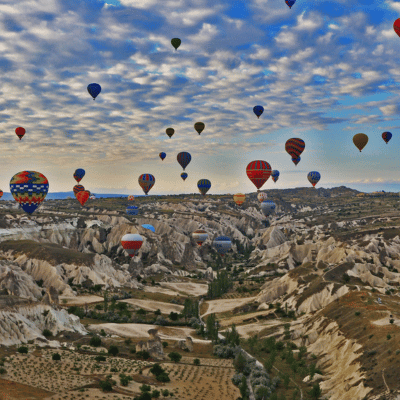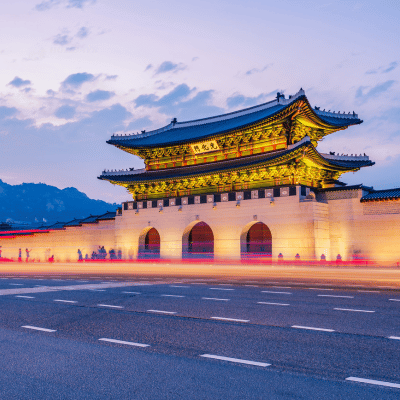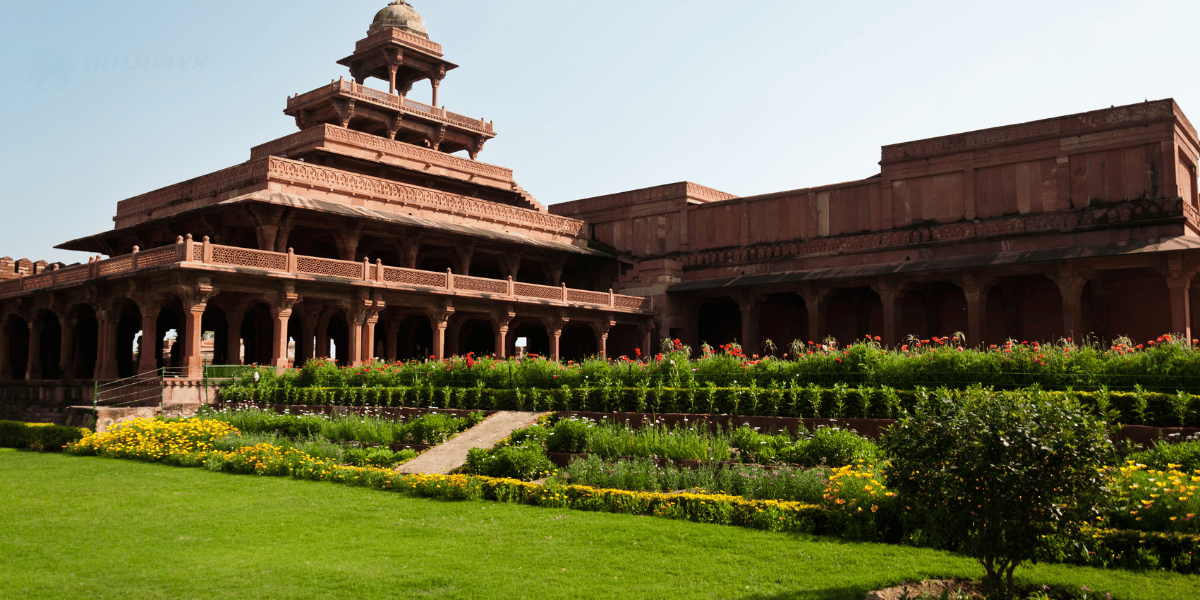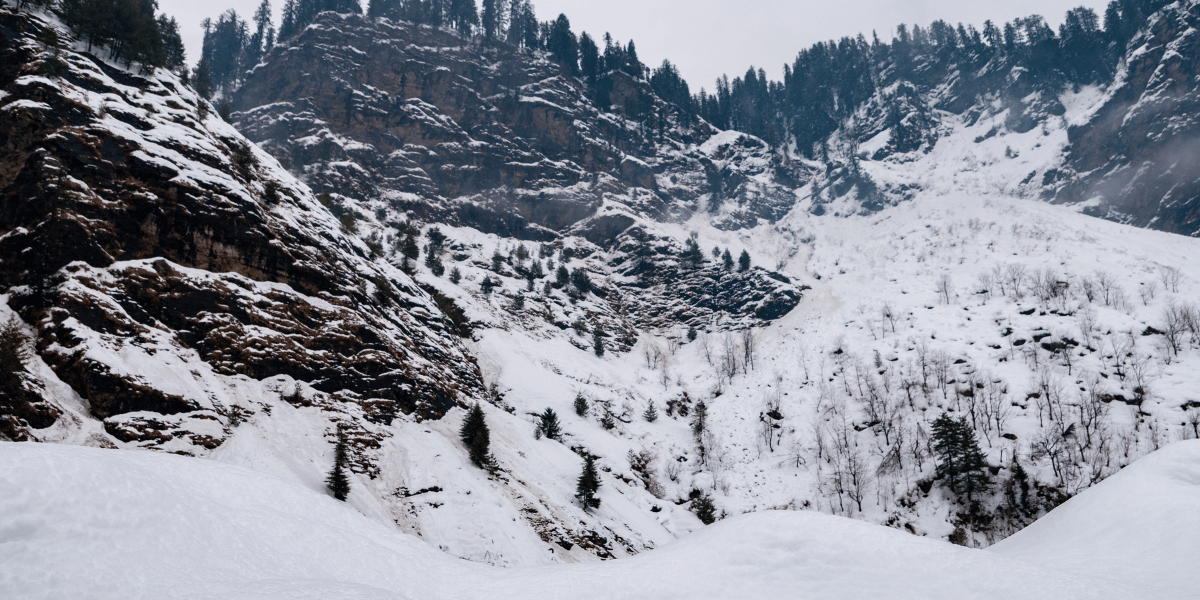The India Golden Triangle Tour, the name itself evokes beauty and attractions, perfectly represents an ideal Indian tour. This 5 nights 6 day tour offers an unparalleled opportunity to explore India’s royal and cultural heritage. The iconic journey covers the culturally rich cities of Delhi, Agra, and Jaipur. These three cities are breathtakingly beautiful and have a special place in the books of history. You get to explore a blend of modern and historical landmarks. Each has its own unique charm, rich with excitement, adventure, knowledge, and fun.
Delhi - The Capital City of India
Delhi, often called the "Heart of India," is the capital territory located in the north-central part of the country, on the western side of the Yamuna River. With a rich history that includes influential rulers like the Mughals and Pandavas, Delhi serves as a significant commercial, transport, and cultural hub, as well as the political center of India. Renowned for its culture, history, authentic cuisine, and fashion, Delhi is best known as the seat of India's national government and attracts tourists from around the world. You will explore an iconic landmark in Delhi called Red Fort, often referred to as Lal Qila in Hindi, renowned for its majestic red sandstone walls and historical significance as the main residence of the Mughal emperors for nearly 200 years. It is a UNESCO world heritage site that stands 75 feet (23 metres) high and encloses a complex of palaces and entertainment halls, projecting balconies, baths, indoor canals, geometrical gardens, as well as an ornate mosque. Visit the Jama Mosque, which was constructed in 1644-1656 by the Mughal emperor Shah Jahan. It is made of redstone and marble. The masjid has been built on an elevation of 10 m and has three gates, two 40-m-high minarets, and four towers.
You'll also have the chance to visit Raj Ghat, situated on the riverbanks, which serves as a memorial for Mohandas Karamchand Gandhi, often hailed as the Father of the Nation. Gandhi was cremated here after his assassination in 1948. The site features a modest black marble structure surrounded by a beautiful garden and attracts visitors from across the globe who come to honor the revered leader. Visit Birla Temple, which is one of the major temples in Delhi. Located to the west of Connaught Place, it was built by the industrialist Sh. J.K. Birla in 1939. It covers 7.5 acres and features numerous religious and national significance fountains, shrines, and statues. Without visiting India Gate, your tour of Delhi is not complete. India Gate is a monumental sandstone arch in New Delhi, located at the eastern end of the Rajpath. It is a stunning archway standing as a tribute to the brave soldiers who sacrificed their lives for the country. You will also be visiting Humayun’s tomb, which was built in 1565 after the death of Humayun and is the tomb of Mughal Emperor Humayun. It is located near the crossing of Mathura Road and Lodhi Road. It stands as a landmark in the development of Mughal architecture and represents the earliest specimen of the Mughal scheme of the garden tomb.
The famous Qutub Minar is a must to visit. It is a UNESCO world heritage site and a famous landmark in Delhi. It stands today at 72.5 meters and is a brick minaret built in 1193 by Muslim conquerors of Delhi. Also visit Lotus Temple, known as Kamal Mandir, a prime tourist destination. It is in the shape of a spectacular lotus with white petals, making it a breathtaking sight. It is surrounded by lush landscaped gardens. The lotus inspired structure spreads across 26 acres of land and comprises 27 petals in free standing state. The last destination you will cover in Delhi is Chandani Chowk, which is the oldest and busiest market in Delhi. It is a densely populated market that has been around for more than three centuries From clothes to jewellery, from spices to dry fruits, from books to electronics, Chandni Chowk has it all. The market is divided into several streets and lanes, each of which specializes in a different type of product.
Agra- The City of Love
Agra, also known as home to one of the seven wonders of the world, is in western Uttar Pradesh state, in northern India. Agra is a city offering the discovery of a beautiful era. It has a rich history, reflected in the numerous monuments dotted in and around the city. The city was founded by Sultan Sikandar of the Lodi dynasty in the early 16th century to be the capital of the Delhi sultanate (a late medieval empire primarily based in Delhi that stretched over large parts of the Indian subcontinent). Agra is best known for the Taj Mahal, a UNESCO world heritage site. It is often considered to be the world's best example of Mughal architecture. Located on the banks of the Yamuna River, the Taj Mahal was built by the Mughal Emperor Shah Jahan in 1631 to honor his wife, Mumtaz Mahal, who died during childbirth. She asked him to create a tomb unlike any other in her memory. The construction took over 17 years, with 22,000 workers and 1,000 elephants contributing to the effort. Today, it stands as a stunning symbol of love and beauty.
Explore Agra Fort, a large 16th century fortress made of redstone that is located on the Yamuna River in the historic city of Agra, west-central Uttar Pradesh, north-central India. It was built by the Mughal Emperor Akbar in the late 16th century, is a testament to Mughal architecture and history. The fort houses a maze of buildings, including vast underground sections. The fort was the site of a battle during the Indian rebellion of 1857, which caused the end of the British East India Company’s rule in India, and led to a century of direct rule of India by Britain.
Jaipur- The Pink City
Jaipur, famously known as "The Pink City," is the capital of Rajasthan, located in the east-central part of the state. As India's first planned city, Jaipur is a major tourist attraction and commercial hub, known worldwide for its colored gems. The city earned its nickname in 1876 when Maharaja Ram Singh had most buildings painted pink, the color symbolizing hospitality, to welcome Britain's Queen Victoria. Today, Jaipur is renowned for its vibrant bazaars, majestic forts, elegant temples, attractive palaces, and scenic wildlife sanctuaries. You will cover famous places in Jaipur, which include Amber Fort, Jal Mahal, City Palace Museum, and Jantar Mantar.
Amber Fort: Fort is among the famous tourist attractions. Situated in the valley of the Aravalli ranges, just below Jaigarh Fort,. It is the finest example of Indo-Islamic architecture. It is clad in pink and yellow sandstone and is a part of an extensive complex. Built by one of the most trusted generals of Akbar, Maharaja Man Singh I, in the year 1592, Amer Fort served as the main residence of the Rajput Rulers.
Jal Mahal: The Water Palace, situated in the middle of a lake in Jaipur, was built in 1799 by Maharaja Sawai Pratap Singh. Originally designed as a hunting lodge for duck shooting rather than a residence, the palace features a low structure with four dome-shaped pillars at each corner and a larger central dome.
City Palace Musuem: This former royal residence and administrative headquarters of the rulers of Jaipur State was established in 1727 by Maharaja Sawai Jai Singh II as part of his grand city project. It was completed in 1732. The palace hosted religious and cultural events and supported arts, commerce, and industry. It was built according to the principles of Vastushastra, combining elements of Mughal and Rajput architectural styles.
Jantar Mantar: It is an astronomical observation site built in the early 18th century. It was built by the Rajput king Sawai Jai Singh, the founder of Jaipur, Rajasthan, and has 19 astronomical instruments. Jantar Mantar is derived from a sanskrit word that means a mysterious formula for calculations.
Fatehpur Sikri Attractions
En route to Jaipur, you will be exploring Fatehpur Sikri. It was built during the second half of the 16th century by Emperor Akbar. Fatehpur Sikri (the City of Victory) was the capital of the Mughal Empire for only some 10 years. It is the best example of the culmination of Hindu and Muslim architecture. Here you will visit Jama Masjid, Buland Darwaza, Jodha Bai Palace, Birbal Bhawan, and Panch Mahal. Each destination is beautiful in its own way.
Jama Masjid: Constructed between 1650 and 1656 by Mughal Emperor Shah Jahan, this is one of India's largest mosques. As a UNESCO World Heritage Site, the mosque is protected and preserved for its cultural and historical value. It stands as a testament to the rich cultural and architectural heritage of the Mughal era and continues to be a site of immense historical and religious significance.
Buland Darwaza: Renowned as the “Door of Victory," it was built in 1575 by Mughal emperor Akbar to commemorate his victory over Gujarat. Buland Darwaza is the highest gateway in the world and is an example of Mughal architecture. The total height of the structure is about 54 meters above ground level.
Jodha Bai Palace: It is a historical monument named after Jodhi Bai, the Hindu wife of Mughal Emperor Akbar. It is a red sandstone palace built by Akbar, with a central courtyard & a mix of Hindu & Mughal styles. The palace showcases a blend of Hindu and Mughal architectural styles, featuring ornate carvings, spacious courtyards, and intricate stone work.
Birbal Bhawan: Located near the Jodha Bai Mahal in Fatehpur Sikri, it is a famous place to visit. It was built in 1571 and is believed to be part of imperial Harem and housed Akbar's senior queens, Ruqayya Begum and Salima Begum. The architecture of this palace is typical Mughal style and is a two storeyed structure.
Panch Mahal: The Panch Mahal, which means five level palace, is located near Zenana Quarters. It was built by the Mughal Emperor. This five storey mahal is designed in a decreasing order, meaning that each floor is shorter than the one below it. From the top of the palace, one can enjoy a spectacular view of the whole city.
This remarkable India Golden Triangle Tour encompasses nearly all the essential destinations in India. This popular itinerary includes historic cities offering a rich blend of cultural heritage, architectural wonders, and vibrant local experiences. Ideal for first-time travelers, this tour provides a comprehensive overview of the country's most popular sights and attractions. The best time to visit these destinations is between October and November or February and April, when temperatures are comfortable throughout the day. Book your dream holiday now to experience India's most amazing sights and attractions.

 Singapore
Singapore
 Malaysia
Malaysia
 Indonesia
Indonesia
 Dubai
Dubai
 Thailand
Thailand
 China
China
 Sri Lanka
Sri Lanka
 Cambodia
Cambodia
 Azerbaijan
Azerbaijan
 Vietnam
Vietnam
 Turkey
Turkey
 Japan
Japan
 Korea
Korea
 Europe
Europe
 India
India
 Maldives
Maldives
 Georgia
Georgia











Thank you so much, Holidays to Nepal team, for their time and effort that they have put into our tour to make it memorable. Our holiday tour to Bali wouldn’t have been completed without your perfect and cosy planning. It was such a good experience, and I will definitely choose Holidays to Nepal for our next trip as well, and I highly recommend others choose them as their travel partner as well. Keep it up, and best of luck for more achievements.